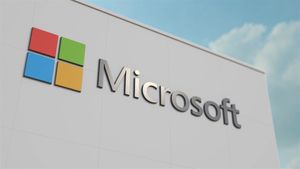
Recent robust economic reports from the United States are bolstering the US dollar, creating a complex and somewhat paradoxical environment for precious metals like gold and silver. Despite the traditional inverse relationship where a strong dollar typically weighs on commodity prices, gold and silver have defied expectations, reaching multi-year highs. This unusual market dynamic reflects a deeper narrative of persistent inflation concerns, escalating geopolitical risks, and strategic shifts in global reserve management, compelling investors to seek both growth opportunities and safe-haven assets.
Economic Strength Fuels Dollar's Ascent Amidst Precious Metal Surge
As of September 25, 2025, the US economy is demonstrating remarkable resilience. The second quarter of 2025 saw an annualized GDP growth rate of 3.8%, a significant upward revision and the strongest performance since Q3 2023. This expansion was primarily driven by robust consumer spending, with personal consumption expenditures (PCE) increasing by 2.5%. Further indicators of economic health include weekly jobless claims unexpectedly falling to a two-month low and August core capital goods new orders rising more than anticipated. The Q2 core PCE price index was also unexpectedly revised upward to 2.6%, highlighting ongoing inflationary pressures.
This strong economic data has provided substantial support for the US dollar, which rallied to a three-week high even after the Federal Reserve (Fed) lowered its benchmark interest rate by 0.25 percentage points to a range of 4%-4.25% on September 17, 2025. This was the first cut since December 2024, made amidst concerns about a stalling labor market and slower economic growth. However, the dollar's resilience suggests that markets are processing the likelihood of gradual Fed easing against a backdrop of continued economic strength, with some policymakers indicating uncertainty regarding the timing of future cuts. The Fed anticipates two more rate cuts in 2025 and one in 2026.
The inverse relationship between the US dollar and precious metals stems from several factors. Gold and silver are globally priced in dollars, meaning a stronger dollar makes them more expensive for international buyers, potentially dampening demand. Additionally, a strong dollar, often associated with higher interest rates (or expectations thereof), increases the opportunity cost of holding non-yielding assets like precious metals, as dollar-denominated assets offer better returns. However, the current rally in gold, breaching $3,791.11 per ounce by September 23, 2025, and silver surpassing $44 per ounce by September 2025, suggests that other powerful forces are at play, including their role as inflation hedges and safe-haven assets amidst global uncertainties, alongside significant central bank accumulation.
Miners and ETFs Poised for Gains, Yet Dollar Strength Lingers
The current environment of soaring gold and silver prices, even with a strong dollar, presents a compelling outlook for companies involved in precious metals. Mining companies, in particular, are direct beneficiaries due to their inherent operational leverage. As the selling price of metals increases, revenues can outpace costs, leading to expanded profit margins, increased cash flows, and higher earnings.
Several public companies are well-positioned to capitalize on these trends. Newmont Corporation (NYSE: NEM), the world's largest gold producer, is expected to see significant gains. Other major gold producers like Barrick Gold Corporation (NYSE: GOLD) and Agnico Eagle Mines Limited (NYSE: AEM) are also poised for increased profitability. Silver-focused miners such as Pan American Silver Corp. (NASDAQ: PAAS), Coeur Mining, Inc. (NYSE: CDE), Hecla Mining Company (NYSE: HL), and First Majestic Silver Corp. (NYSE: AG) stand to benefit substantially from the surge in silver prices, driven by both investment and growing industrial demand in green energy and electric vehicles. Precious metals streaming companies like Wheaton Precious Metals Corp. (NYSE: WPM) also profit directly from higher market prices, as they purchase metal at pre-set rates. Gold Royalty Corp. (NYSE: GROY) will similarly see enhanced revenue from its royalty streams.
Exchange-Traded Funds (ETFs) provide another avenue for investors. Physically-backed ETFs such as SPDR Gold Trust (NYSEARCA: GLD) and iShares Silver Trust (NYSEARCA: SLV) will directly track the appreciation of the underlying metals. ETFs that invest in mining companies, like VanEck Gold Miners ETF (NYSEARCA: GDX) and Global X Silver Miners ETF (NYSEARCA: SIL), offer leveraged exposure, potentially outperforming the physical metals due to the operational leverage of their constituent companies. While a strong dollar might typically be a headwind, the overwhelming demand driving metal prices upward is the dominant factor for these funds.
A Broader Significance: Global Realignments and Policy Challenges
The confluence of a strong US dollar, robust US economic reports, and rising gold/silver prices signals a complex global economic realignment. A strong dollar, while making imports cheaper for US consumers, can hinder US export competitiveness, impacting sectors like agriculture and manufacturing. Conversely, it creates challenges for emerging markets (EMs) with dollar-denominated debt, making servicing costs more expensive and potentially drawing capital away from these economies towards the US, which is perceived as more stable.
The unusual correlation of a strong economy, strong dollar, and surging precious metals points to deeper anxieties. Gold and silver are acting as hedges against persistent inflation, which the upward revision of the Q2 core PCE price index confirms, and as safe havens against escalating geopolitical instability. A significant trend underpinning gold's strength is the unprecedented accumulation by central banks globally, diversifying reserves away from traditional currencies, including the US dollar, to mitigate geopolitical and monetary risks. Silver's dual role as an industrial metal also benefits from accelerating demand in green energy and electric vehicle sectors, further supporting its price.
From a regulatory perspective, the Federal Reserve faces a delicate balancing act. While strong economic data would typically support maintaining higher interest rates to curb inflation, the Fed's recent rate cut in September 2025, alongside expectations of further easing, indicates a cautious approach to support employment against potential weakening, even as inflation remains a concern. This highlights the Fed's dual mandate of maximum employment and price stability, navigating a contradictory landscape where growth and inflation coexist with underlying risks. Historically, gold prices have often moved inversely to interest rates, but the current environment suggests that inflation expectations and geopolitical risk premiums are overriding traditional rate-driven dynamics. The simultaneous strength in equity markets (S&P 500 at all-time highs) and record gold performance is an unusual market dynamic, reflecting both "risk-on" and "defensive" investor positioning.
What Comes Next: Navigating Volatility and Persistent Trends
In the short to medium term, the trajectory of the precious metals market will largely depend on the interplay between continued US economic strength, the Federal Reserve's monetary policy, and the evolution of global geopolitical and inflationary pressures. If US economic reports continue to be strong, potentially leading the Fed to be more cautious about aggressive rate cuts, the dollar could maintain its strength. This would typically exert downward pressure on gold and silver, making them less attractive compared to yielding dollar assets.
However, the persistent inflation, as suggested by the Q2 core PCE revision, coupled with ongoing geopolitical uncertainties, is likely to provide a strong underlying support for precious metals. Analysts continue to forecast gold potentially reaching $3,000 per ounce in 2025 and even $4,000 by mid-2026 if inflation persists and global risks escalate. Silver is also expected to maintain its strong upward momentum, particularly given its increasing industrial demand and potential to outperform gold. Strategic pivots for investors might involve maintaining exposure to precious metals as a hedge, while also carefully monitoring Fed communications for any shifts in its stance on inflation and future rate adjustments. Market opportunities may emerge from volatility, but challenges will include accurately forecasting the dollar's strength against the backdrop of these counteracting forces.
Comprehensive Wrap-Up: A Resilient Dollar, Resurgent Metals, and an Evolving Market
In summary, the US financial markets are currently characterized by a robust US dollar, propelled by strong economic reports, yet simultaneously witnessing a powerful rally in gold and silver prices. This seemingly contradictory scenario underscores a market grappling with persistent inflation concerns, significant geopolitical tensions, and a fundamental shift in central bank reserve strategies. The traditional inverse relationship between the dollar and precious metals is being challenged by these overriding factors, positioning gold and silver as essential hedges and safe havens.
Moving forward, investors should closely monitor the Federal Reserve's actions, particularly its balance between managing inflation and supporting employment. Any changes in the Fed's outlook on future rate cuts could significantly impact both the dollar and precious metals. The ongoing accumulation of gold by central banks and the escalating industrial demand for silver are structural trends that are likely to provide continued support for these metals, irrespective of short-term dollar fluctuations. The market will remain dynamic, requiring investors to stay informed about macroeconomic data, geopolitical developments, and central bank policies to navigate this complex and evolving landscape.
This content is intended for informational purposes only and is not financial advice.





